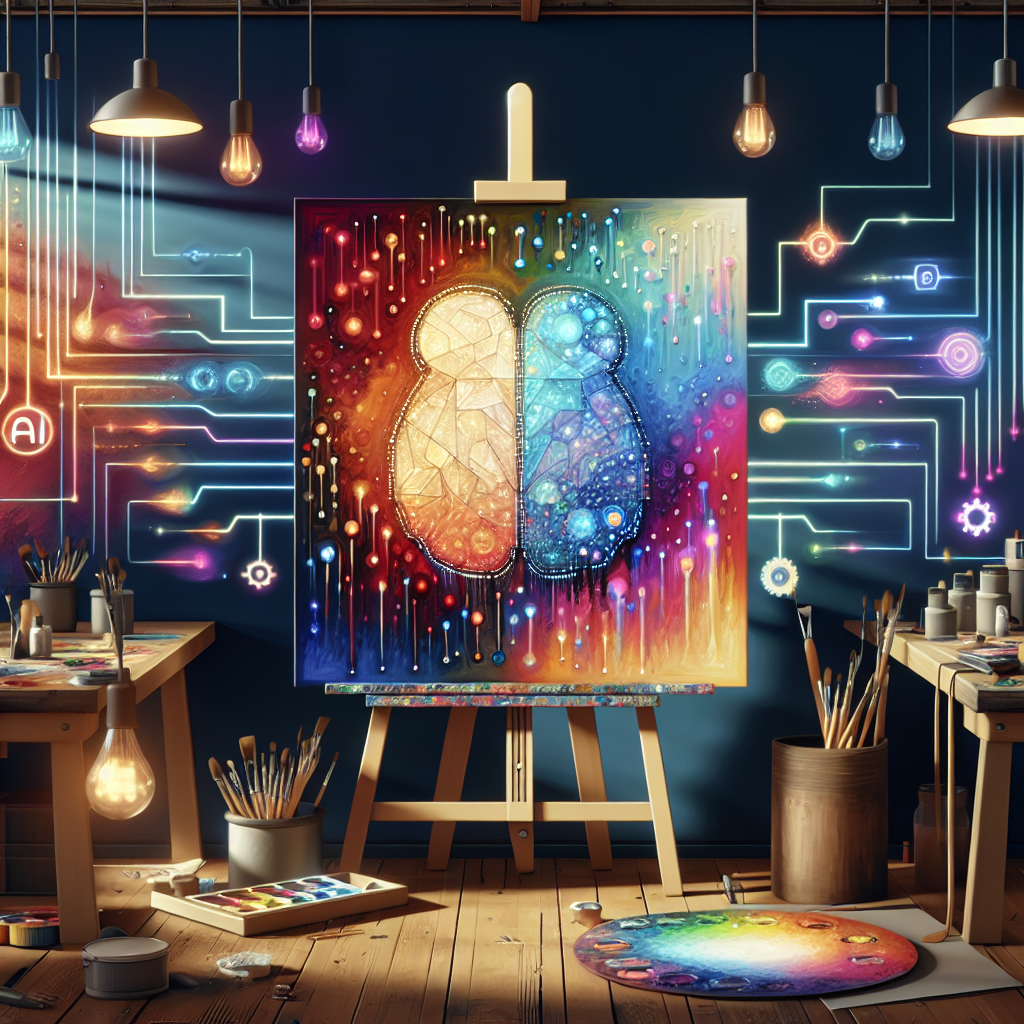Artificial Intelligence (AI) has revolutionized various industries, and the world of art is no exception. AI tools are being used by artists, designers, and creators to enhance their work, push boundaries, and explore new possibilities. The integration of AI in art has opened up a whole new realm of creativity and innovation, allowing artists to explore new techniques, styles, and concepts that were previously unimaginable. In this article, we will explore the use of AI tools in art and how they are shaping the future of artistic expression.
AI tools in art come in various forms, from machine learning algorithms that can analyze and generate images, to chatbots that can engage with audiences and provide insights into the creative process. These tools are being used by artists in a multitude of ways, from creating unique art pieces to collaborating with AI to explore new artistic concepts. One of the most exciting aspects of AI in art is its ability to push the boundaries of traditional artistic techniques and styles, allowing artists to experiment with new mediums and technologies.
One of the most well-known applications of AI in art is the use of Generative Adversarial Networks (GANs) to create art. GANs are a type of AI algorithm that consists of two neural networks – a generator and a discriminator – that work together to create new images. The generator creates new images based on a set of input data, while the discriminator evaluates the images and provides feedback to the generator. Through this process, GANs can create incredibly realistic images that can be indistinguishable from those created by human artists.
Artists are using GANs to create new forms of art that push the boundaries of traditional artistic techniques. For example, artist Mario Klingemann has used GANs to create mesmerizing abstract art pieces that explore the boundaries between human and machine creativity. Klingemann’s work has been exhibited in galleries around the world and has gained recognition for its innovative approach to art creation.
Another way AI is being used in art is through the creation of AI-generated art. Artists are using AI algorithms to generate new art pieces based on a set of input data, such as images, text, or sound. These AI-generated art pieces can be incredibly diverse and range from abstract paintings to realistic portraits. Artists like Robbie Barrat have used AI algorithms to create stunning art pieces that challenge traditional notions of creativity and artistic expression.
In addition to creating art, AI tools are also being used to enhance the creative process for artists. Chatbots powered by AI algorithms can engage with audiences, provide feedback on art pieces, and even assist artists in generating new ideas. These chatbots can provide valuable insights into the creative process and help artists explore new directions in their work. For example, artist Refik Anadol has created an AI-powered chatbot that engages with audiences and provides insights into his creative process, allowing viewers to gain a deeper understanding of his work.
One of the most exciting aspects of AI in art is its ability to democratize creativity and provide opportunities for artists to collaborate with AI. Artists can now collaborate with AI algorithms to create new art pieces, explore new techniques, and push the boundaries of traditional artistic styles. This collaboration between human artists and AI algorithms has the potential to revolutionize the art world and open up new possibilities for artistic expression.
FAQs:
1. What are some examples of AI tools being used in art?
– Artists are using Generative Adversarial Networks (GANs) to create art pieces, AI algorithms to generate art, and chatbots to engage with audiences and provide insights into the creative process.
2. How are AI tools shaping the future of artistic expression?
– AI tools are pushing the boundaries of traditional artistic techniques and styles, allowing artists to experiment with new mediums and technologies and explore new artistic concepts.
3. How can artists collaborate with AI algorithms?
– Artists can collaborate with AI algorithms to create new art pieces, explore new techniques, and push the boundaries of traditional artistic styles, opening up new possibilities for artistic expression.
4. What are some challenges of using AI tools in art?
– One challenge of using AI tools in art is the ethical implications of AI-generated art and the potential impact on the art world. Additionally, there may be concerns about the role of AI in the creative process and the potential loss of human creativity.
In conclusion, AI tools are revolutionizing the world of art and opening up new possibilities for artists to explore, create, and collaborate. From creating stunning art pieces with GANs to engaging with audiences through AI-powered chatbots, the integration of AI in art is reshaping the future of artistic expression. As artists continue to experiment with AI tools and push the boundaries of traditional artistic techniques, the art world is poised for a new era of creativity and innovation.

